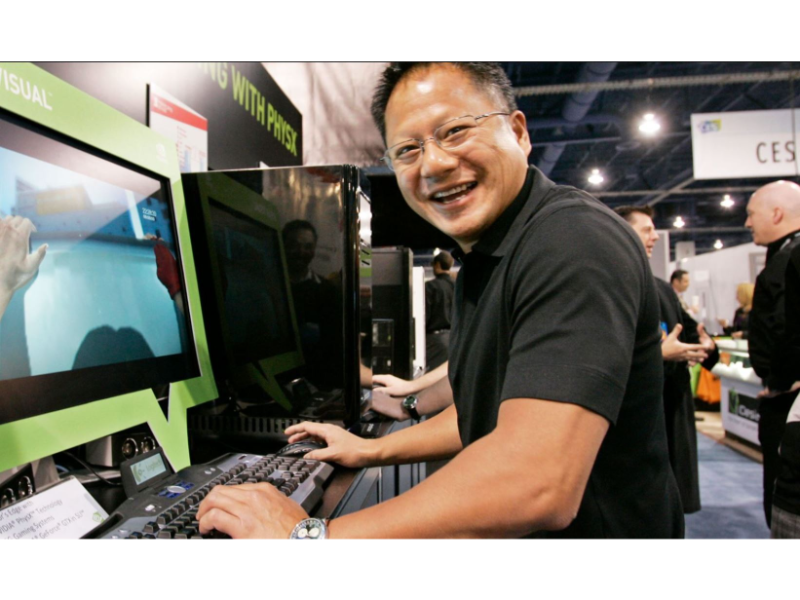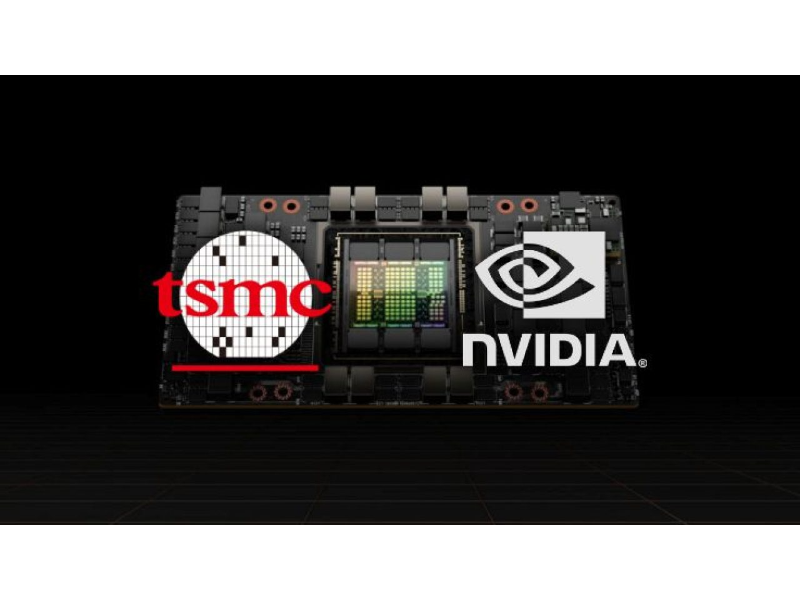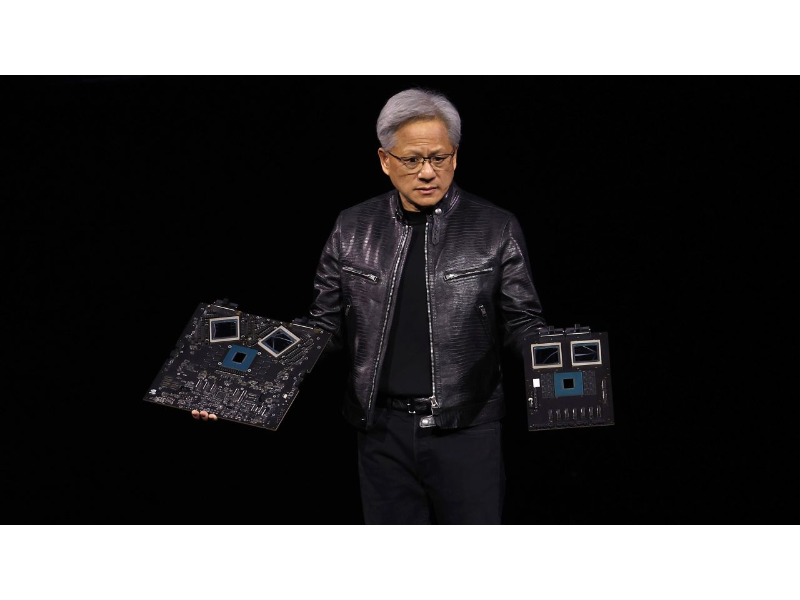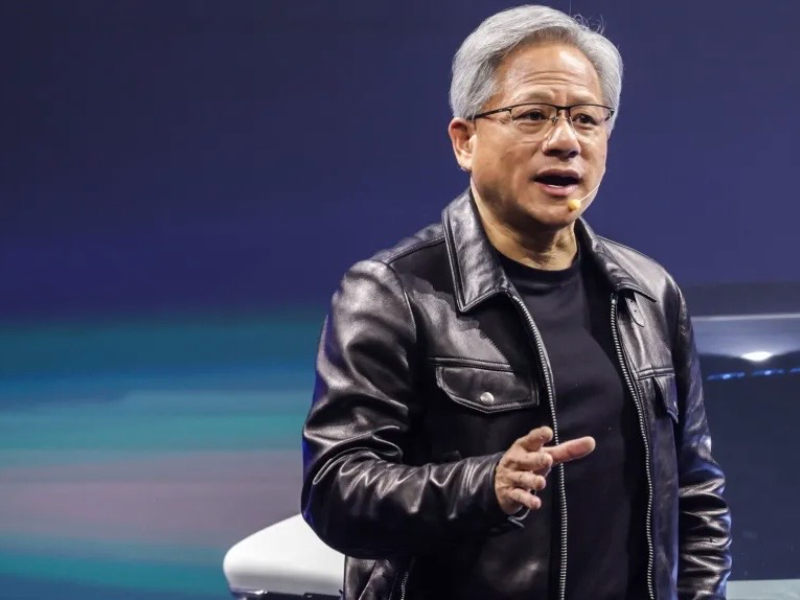- Jensen Huang’s “Huang’s Law” drove NVIDIA’s relentless pursuit of doubling GPU performance every six months, outpacing competitors.
- Despite facing industry setbacks and competition, Huang’s unwavering determination fuelled NVIDIA’s resilience and growth.
- Huang’s leadership steered NVIDIA through challenges, emphasising the necessity of continuous innovation and adaptation in the fiercely competitive business world.
At the 2024 GTC conference, NVIDIA‘s founder and CEO, Jensen Huang, delivered a keynote speech unveiling groundbreaking advancements in accelerated computing and robotics, sparking global attention. Many industry experts believe that his unveiling of ‘nuclear-grade chips’ and a series of technical products will revolutionise and lead the AI world. Periodically, Jensen Huang astounds everyone with his remarks or products. Of course, in recent years, what has also amazed everyone is his company’s stock price and profits. Over these past 30 years, what has Jensen Huang done right at NVIDIA? And how did he become an ‘AI giant’?
Also read: Nvidia unveils flagship AI chip, the B200, at GTC 2024
Also read: Nvidia’s next-generation data centres to work with cloud providers
Silicon Valley’s ‘most belligerent’ Chinese
Jensen Huang, with a net worth of several billion, nearly became a “troublemaker.” Born in 1963 in Taiwan, China, with ancestral roots in Lishui, Zhejiang, his parents, a chemical engineer father and a teacher mother, held typical Chinese aspirations of success for their sons.
In pursuit of a better education, at nine, Huang and his brother were sent to their uncle’s in the US. Due to financial difficulties, they were enrolled in a rural boarding school, which resembled more of a reform institution, with violence and tattoos prevalent among students. Despite being bullied and assigned to washrooms due to his young age, Huang didn’t succumb to negativity. Instead, he honed resilience, fostering positive relationships with older roommates and excelling academically.
Reflecting on those experiences in interviews, he humorously acknowledges his past roles while expressing gratitude for the lessons learned. It wasn’t until 1974, due to his parents’ immigration, that Huang transitioned to a regular school, commencing his academic journey. At 16, he gained admission to the Electronics Engineering program at Oregon State University, also finding love and vowing to become a company CEO by 30.

Before founding NVIDIA, Huang worked at AMD and LSI, showcasing both technical expertise and sales acumen. His entrepreneurial journey with partners Chris and Prem culminated in the establishment of NVIDIA in California in 1993, aiming to revolutionise graphic chip technology. Despite his playful demeanour in daily life, Huang is renowned as a fierce competitor in the chip industry, boldly challenging giants like Intel and AMD.
NVIDIA’s unprecedented trillion-dollar market value surpassed Intel’s by 7.9 times and AMD’s by 4.7 times, illustrating its dominance in the field. As Huang once remarked, “The greatest beneficiary of war is never any of the parties involved but the one selling weapons.” NVIDIA stands as that seller. Some estimate that it would require ten thousand NVIDIA A100 chips for a ChatGPT to operate, underscoring the company’s significance. Nevertheless, even the grandest ideals necessitate incremental steps towards realization.
Reviewing the history of NVIDIA, whether it’s the metaverse, cryptocurrency, or AI, Jensen Huang missed none of these trendy technologies. He once said, “As a company, as an entrepreneur, you must crave success more than your opponents crave your demise.” NVIDIA repeatedly caught the wave of the times, not by sheer luck, but by Jensen Huang’s willingness to take risks and make bold moves. Two critical decisions directly propelled NVIDIA to the unrivalled position of chip champion.
How did NVIDIA become legendary?

In the 1980s, Silicon Valley witnessed a revolutionary shift with the rise of fabless chip companies. The number of such companies exploded, benefiting not only NVIDIA but also industry giants like Qualcomm and Marvell. Previously, owning a fabrication facility was a must for chip companies, as stated by AMD founder Jerry Sanders, likening it to a pet shark in a swimming pool – costly to maintain and potentially fatal for startups.
Jensen Huang’s strategic move was to focus solely on chip design, not manufacturing. With startup capital of only $40,000, after a meeting with Morris Chang, the founder of TSMC, NVIDIA embarked on a 26-year partnership. TSMC manufactured NVIDIA’s chips, allowing NVIDIA to concentrate on chip design without the heavy burden of fabrication costs.
NVIDIA’s true stronghold emerged with the advent of the GPU era, leveraging software platforms to drive revenue. While Intel dominated the CPU domain, NVIDIA ventured into uncharted territory. In 1999, NVIDIA introduced the world’s first GPU – the GeForce 256 graphics card – laying the groundwork for future success.
The essence of NVIDIA’s GPUs lies in parallel computing. To open up the market, Jensen Huang made a crucial decision to secretly initiate a project called CUDA, aiming to create a universal parallel computing architecture. Despite skepticism due to massive investments – with annual expenditures of $500 million, exceeding its revenue of less than $3 billion at the time – Jensen Huang persevered, betting on the potential of GPU general-purpose computing.
Prediction of AI as a chipmaking opportinity
While Intel and AMD engaged in frequency wars, Huang boldly predicted the future role of microprocessors in AI and other fields. In June 2006, the CUDA architecture was officially launched. Within a year, American computer scientist Andrew Ng built the first deep learning model based on CUDA/GPU, successfully identifying a cat from 10 million images. This sent shockwaves through the industry, igniting a spark in GPU-accelerated AI research.
Jensen Huang’s foresight and willingness to take calculated risks prepared NVIDIA for the impending wave, enabling a remarkable turnaround of 20x in five years and positioning it as the first winner of the AI era.
NVIDIA’s connection to the AI wave traces back to the seeds Jensen Huang personally planted in 2016. As a workaholic, he always gets involved hands-on. At the inception of OpenAI, he personally delivered the world’s first DGX to OpenAI, NVIDIA’s most powerful floating-point operation GPU at the time. With Jensen Huang’s support, OpenAI launched ChatGPT six years later and accelerated its update cycle to one month. As ChatGPT swept the globe, NVIDIA, as a chip supplier, rode the wave of the rapidly developing AI/AGI era.
Jensen Huang asserted, “The iPhone moment of AI is already here.” Yet, his ambition extends beyond being a mere “arms dealer” of chips; he aims to become the technological infrastructure of AI.
Pop quiz
When did the GTC conference start?
A. 2018
B. 2019
C. 2020
D. None of the above
Face failure with composure
As the “most combative Chinese in Silicon Valley,” Jensen Huang’s life revolves around four significant things: work, contemplation, helping others, and creation. Most entrepreneurs face life and death situations, and Jensen Huang’s fighting spirit largely stems from the dark vitality drawn from failures. Throughout NVIDIA’s journey to the top, it has been a bumpy ride, with several instances teetering on the brink of collapse.
Unlike those who boast about their own glorious achievements, Jensen Huang always faces failures with equanimity. He said, “At NVIDIA, I experienced failure, massive failure, all of which was embarrassing and humiliating, almost leading us to ruin.” Faced with failure, some succumb to it, but Jensen Huang’s will to live always enables him to turn adversity into opportunity. “My desire to live exceeds the will of almost everyone who wants to kill me.”
Close to bankruptcy after launch of NV1 chip
At the beginning of his entrepreneurial journey, Jensen Huang was once in despair. In 1995, after two years of polishing, NVIDIA’s first product, the NV1 display chip, was launched. Unfortunately, this product not only failed to revolutionise the industry but also nearly drove NVIDIA to bankruptcy. Unlike the mainstream “triangular texture mapping” method, NVIDIA innovatively adopted the “quadrilateral texture mapping” method. After a year, Jensen Huang realised that the company’s architecture was flawed and technically inadequate. At the same time, this technology was incompatible with the structure of Microsoft’s Windows 95.
Undoubtedly, Windows 95 was the future of PCs. If NVIDIA completed Sega’s game console, it would mean they had created a product incompatible with Windows. Jensen Huang realised his mistake, and he “had to stop.” To salvage the project, Jensen Huang admitted the mistake to Sega and secured $7 million in R&D funding, leading to the redevelopment of new chips. Despite this, the company’s funds were only sufficient for 30 days, and to survive, Jensen Huang had to lay off employees, reducing the team from over 100 to just over 30. It was his first taste of failure, but only those who can afford to lose can eventually win.
Next, Jensen Huang led the team to actively engage in research and development. Two years later, the Riva 128 he built shocked the emerging 3D market, selling millions within just four months of its release. This product dragged NVIDIA out of the quagmire and saved the company’s operations.
Until now, Jensen Huang’s opening line has always been, “The company is only 30 days away from bankruptcy,” motivating employees, and the triangle has become the appearance of the current NVIDIA headquarters building. After this battle, Jensen Huang understood that confronting reality is not heroic; it takes courage to set aside one’s pride and turn away at the right time. In a speech at Taiwan University many years later, he said, “Facing mistakes honestly and humbly seeking help are the most difficult lessons for smart and successful people to learn.”

Jensen Huang’s second defeat came in the mobile market. In 2007, Steve Jobs “reinvented the phone,” and the iPhone marked the beginning of the era of smartphones in the mobile internet age. Since then, the smartphone chip market has been ablaze with competition. Jensen Huang saw the huge potential of the mobile market, investing $367 million to acquire Icera’s modem business. However, due to reasons such as outdated architecture, high power consumption, lack of baseband, and price, the market share of the Tegra series of chips continued to decline.
Meanwhile, Qualcomm and MediaTek rose against the tide, seizing a large share of the market. After careful consideration, Jensen Huang made a bold decision in 2015 to abandon the mobile phone market. In hindsight, Jensen Huang said, “NVIDIA’s mission is to create computers that can ‘solve problems that ordinary computers cannot solve.’ We should focus on this vision and make our unique contributions.” This strategic withdrawal and abandonment enabled Jensen Huang to focus on the core strategy, creating a new market – robotics technology, with a secure architecture for neural network processors and AI algorithms. During the PC market campaign, Jensen Huang faced strong threats from Intel and AMD.
Without CPU technology, NVIDIA had to rely on the platforms of the two giants. However, NVIDIA’s development was restricted by the giants, and Jensen Huang faced a choice: either stick to graphics chips or expand the battlefield to enter the CPU market. Nevertheless, despite a 16% decline in revenue in 2008, Jensen Huang continued to increase investment. It can be said that NVIDIA is the only chip company that has been persistently committed to graphics and parallel computing technology for 30 years. Jensen Huang’s attitude toward setbacks deeply influenced NVIDIA’s corporate culture.
In a public speech, he stated that a company cannot fundamentally encourage innovation without cultivating a culture of risk-taking and tolerating failure. To achieve this, NVIDIA has established a culture of intellectual honesty. In an open letter, he emphasised that NVIDIA employees should periodically examine whether the strategic direction violates first principles. The so-called first principle is to return to the most basic nature of things, conduct unbiased analysis, and find the best solution to achieve the goal or solve the problem. Elon Musk uses this principle to think about Tesla’s business layout.
The correct answer is B.

